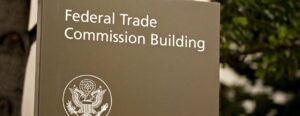Artificial Intelligence has gone from theoretical to transformative in just a few years. By 2025, AI is powering everything from job interviews and education to warfare and healthcare diagnostics. While the innovation is astounding, the risks are mounting—and the call for regulating AI in 2025 is louder than ever.
But what does AI regulation actually mean? Who should create the rules—and how can we enforce them in a global, fast-moving tech ecosystem? This opinion explores the urgency of AI oversight, and why the window for ethical alignment is rapidly closing.
The Speed of AI Outpaces the Law
In the past 24 months, generative AI tools like ChatGPT, Midjourney, and Claude have disrupted content creation, coding, legal research, and even therapy. Meanwhile, deepfake scams, algorithmic bias, and synthetic voice fraud have raised serious concerns.
According to a 2024 World Economic Forum report, 73% of global citizens now believe AI should be regulated like any other powerful industry—akin to pharmaceuticals or financial services.
Yet, many governments are still debating definitions, jurisdiction, and enforcement. The tech is moving faster than legislation can keep up.
What Are the Real Risks?
Here are just a few scenarios where AI\’s unregulated use can do harm:
- Bias in Hiring & Lending: Algorithms trained on biased data perpetuate inequality in job applications and loan approvals.
- Military Use: Autonomous weapons systems pose a threat without clear international rules of engagement.
- Information Warfare: Deepfakes and AI-generated misinformation are being used to manipulate elections and social discourse.
Without regulation, AI can amplify human flaws and systemic injustice—at scale, and at speed.
Global Momentum Is Building—Slowly
There are signs of hope. The EU passed its AI Act in 2024, the first major framework of its kind, categorizing AI systems by risk and requiring transparency for high-impact applications.
The U.S., meanwhile, issued a set of AI executive orders in late 2024 focused on federal agency compliance and ethical AI research, but comprehensive legislation remains in progress. China, for its part, has released tight guidelines on deepfake labeling and data localization but continues to use AI aggressively for surveillance.
Bottom line: There’s no unified approach. And AI doesn’t respect borders.
Should Tech Companies Be Self-Regulating?
Many AI companies have released their own “ethical guidelines” or signed on to voluntary pacts—like the White House Voluntary AI Commitments of 2024. But history suggests that voluntary compliance is often too little, too late.
Remember social media platforms in the 2010s? Without regulation, misinformation exploded, algorithms radicalized users, and privacy was exploited. AI presents similar risks—on a much larger scale.
Opinion: If AI developers are also the only gatekeepers, conflicts of interest will inevitably compromise public safety.
What Regulation Could—and Should—Look Like
Regulation doesn\’t have to mean innovation slowdown. Smart, adaptive governance can create frameworks that foster responsible progress.
Key regulatory principles could include:
- Transparency: Systems must disclose when AI is involved in decisions that affect rights or livelihoods.
- Accountability: Clear liability when AI causes harm—especially in healthcare, finance, and public safety.
- Bias Audits: Mandatory testing of algorithms for discrimination and fairness before deployment.
- Data Protections: Limits on personal data collection, storage, and use for model training.
Think of it not as red tape—but as digital guardrails.
Conclusion: Regulate to Elevate
Regulating AI in 2025 is not about stifling innovation—it’s about ensuring that innovation benefits all of humanity, not just a few. Without global cooperation and timely action, we risk creating tools that are too powerful to control, too opaque to understand, and too embedded to reverse.
The challenge is great—but so is the opportunity. Let’s build an AI future that’s as ethical as it is intelligent.




